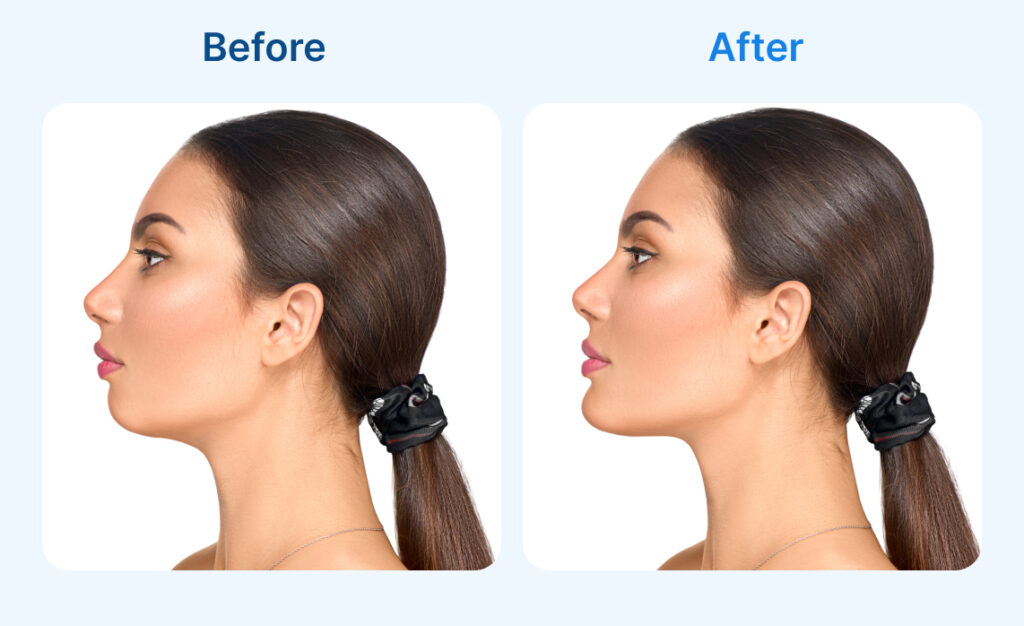Hearing loss can affect everyday life, making it harder to have conversations, enjoy music, or even stay aware of your surroundings. Often, the decline in hearing is gradual, going unnoticed until it becomes a real challenge. One common cause of this is otosclerosis, where abnormal bone growth in the middle ear prevents the stapes bone … Continued The post Stapedectomy: A Vital Surgery for Otosclerosis Treatment first appeared on Denefits.
Hearing loss can affect everyday life, making it harder to have conversations, enjoy music, or even stay aware of your surroundings. Often, the decline in hearing is gradual, going unnoticed until it becomes a real challenge.
One common cause of this is otosclerosis, where abnormal bone growth in the middle ear prevents the stapes bone from vibrating properly, blocking sound. If left untreated, it can seriously impact your quality of life. Luckily, a stapedectomy can help by replacing the damaged stapes with a prosthetic, restoring hearing and improving daily experiences.
What is a Stapedectomy?
A stapedectomy is a type of middle ear surgery that helps restore hearing in people with otosclerosis. This condition causes abnormal bone growth around the stapes bone, preventing it from moving properly and blocking sound from reaching the inner ear. During stapedectomy surgery, a surgeon removes and replaces the damaged stapes with a tiny prosthesis. This allows sound waves to pass through as they should, helping to improve hearing.
Purpose and Benefits of Stapedectomy Surgery
The primary purpose of a stapedectomy surgery is to restore hearing by replacing the stiffened stapes bone with a prosthetic implant. Here’s how this surgery can make a difference:
- Restores Hearing – This hearing loss surgery can improve hearing ability by allowing sound waves to pass through the middle ear properly.
- Lasting Results – The prosthesis used in stapedectomy surgery is durable, providing a long-term solution for patients with otosclerosis.
- Reduces Dependence on Hearing Aids – Many people who undergo otosclerosis surgery find that their hearing improves so much that they no longer need hearing aids.
- Improves Quality of Life – Better hearing makes conversations easier, strengthens social connections, and boosts confidence.
Conditions Treated by Stapedectomy
The most common reason for undergoing stapedectomy surgery is otosclerosis, a progressive disease that affects more than three million Americans. Without treatment, otosclerosis can lead to severe hearing loss. In some cases, a stapedectomy procedure may also be necessary for individuals with congenital stapes fixation or trauma affecting the middle ear.

Curious About How Much Otoplasty Surgery Could Cost in 2025?
Understanding the Stapes Bone and Otosclerosis
Hearing is anything but simple, as it depends on the delicate cooperation of some of the tiniest bones in the body. One interesting bone in question is the stapes, the smallest bone in the human body, but an important player for hearing. It, along with the malleus and incus, form a three-bone team in the middle ear passing sound vibrations from the eardrum to the inner ear. Think of the stapes as a tiny bridge that carries sound waves to the brain for processing.
How Otosclerosis Messes with Hearing
Now imagine that little bridge gets stuck. That’s just about what happens with otosclerosis, a condition characterized by excess bone formation around the stapes, hindering it from moving freely. As the stapes must vibrate freely to send sound through the ear, a gradual buildup leads to hearing loss; at first, sound might just be muffled and later it may end worse. Additionally, in severe cases, otosclerosis may extend into the cochlea thereby intensifying hearing loss.
Why Otosclerosis Surgery Might Be the Best Option?
If otosclerosis gets bad enough, surgery might be the best fit. Stapedectomy replaces the stuck stapes bone with a tiny artificial one. This allows sound to travel through your ear properly again, restoring much of your lost hearing.
This surgery can be life-changing for many, making conversations clearer and everyday sounds easier to hear again. The good news is that otosclerosis can be treated, especially if caught early. A specialist can help you find the best option, whether hearing aids, surgery, or a mix of both.

Did You Know?
Women are 1.5 to 2 times more likely to be affected by this condition than men.
Types of Ear Surgery for Hearing Loss
There are different ways to treat hearing loss, depending on what’s causing it and how severe it is. Sometimes, surgery is the best way to restore or improve hearing. There are several types of ear surgeries, each designed to fix specific problems in the middle or inner ear.
Comparison of Middle Ear and Inner Ear Surgery: Key Differences and Procedures
| Category | Middle Ear Surgery | Inner Ear Surgery |
| Target Area | Middle ear (eardrum, ossicles) | Inner ear (cochlea, auditory nerve) |
| Purpose | Repairs or replaces damaged middle ear structures to improve sound transmission | Addresses severe hearing loss by enhancing inner ear function or bypassing damaged structures |
| Common Procedures | Stapedectomy, Stapedotomy, Tympanoplasty, Ossiculoplasty | Cochlear Implants, Auditory Brainstem Implants |
| Best for | Hearing loss results from problems in the middle ear | Sensorineural hearing loss affecting the cochlea or auditory nerve |
| Procedure Type | Often reconstructive, involves prosthetics or grafts | Typically involves implants or direct stimulation of auditory pathways |
Stapedectomy Procedure: A Simple Fix for Hearing Loss
A stapedectomy is usually an outpatient surgery, meaning you can go home the same day. The procedure takes about 90 minutes to two hours and follows these steps:
1. Anesthesia: You’ll receive either local or general anesthesia so you won’t feel any pain during the surgery.
2. Accessing the Ear: The surgeon will use a laser or tiny instruments to carefully reach your eardrum. Sometimes, they make a small cut in front of or behind your ear for better access.
3. Lifting the Eardrum: The eardrum is gently lifted to expose the middle ear bones.
4. Replacing the Stapes: The surgeon removes the stuck stapes bone and replaces it with a tiny artificial implant.
5. Closing Up: The eardrum is put back in place, and a bandage is applied to help it heal properly.
Stapedotomy vs. Stapedectomy – Key Differences
The table below breaks down the key differences between these two procedures, making understanding how each works and what to expect easier.
| Procedure | Stapedectomy | Stapedotomy |
| Definition | The entire stapes bone is removed and replaced with a prosthetic. | A small hole is made in the stapes, and a prosthetic is placed inside. |
| Invasiveness | More invasive since the whole bone is removed. | Less invasive as only a small part of the stapes is modified. |
| Risk Level | Slightly higher risk of complications, such as inner ear damage. | Lower risk due to a more precise approach. |
| Healing Time | May take slightly longer due to the extent of the procedure. | Usually has a quicker recovery time. |
| Success Rate | High success rate, improving hearing in most patients. | Equally effective but with fewer complications. |
Middle Ear Transplant as an Alternative
Middle ear reconstruction, or ossicular chain reconstruction, is the best alternative for people with severe middle ear damage. This surgery replaces damaged middle ear ossicles with prosthetics. It is usually suggested when these small bones become dysfunctional due to infection, trauma, or chronic disease.
Though not as common as stapedectomy or stapedotomy, a middle ear transplant is a good option for individuals otherwise unable to restore their hearing through conventional treatments.
Stapedectomy Procedure: What to Expect
During the procedure, the stapes is replaced with a small prosthetic implant to help sound travel to the inner ear.
1. Step-By-Step Guide to Stapedectomy Surgery
- Anesthesia – The doctor will give you local or general anesthesia so you won’t feel any pain.
- Accessing the Ear – A small incision inside the ear canal (or sometimes behind the ear) is made to reach the stapes.
- Removing the Stapes – The damaged bone is carefully taken out, leaving part of it in place.
- Placing the Implant – A tiny prosthetic stapes (made of metal or plastic) is inserted to take its place.
- Closing the Ear – The surgeon packs the ear with a soft dressing and closes the incision.
- Final Check – The doctor makes sure everything is in the right place before finishing the procedure.
2. Recovery Process and Expected Outcomes
- Most people can go home the same day or the next day.
- In most people, some dizziness and/or mild pain with a feeling of fullness in the ear may be experienced for a few days.
- Hearing improvement may take weeks to months, so hearing will not improve immediately.
- It is important to have follow-up visits to ensure healing and that the implant works well.
- Avoid heavy lifting, loud noises, swimming, and flying for a few weeks to help healing.
3. Use of an Ear Bandage After Surgery
Bandaging is essential after surgery as it protects your ear and prevents complications.
1. What Does the Bandage Do?
- It protects the ear – provides a barrier and keeps dirt and bacteria out.
- It reduces swelling and bleeding – applies gentle pressure to reduce swelling and prevent minor bleeding.
- It keeps the implant secure.
- It prevents fluid build-up and it helps soak up any fluids.
2. Caring for the Bandage
Healing tips include:
✅ Keep it dry
✅ Do not poke or prod – leave it for the doctor.
✅ Avoid heavy-duty activities like lifting weights, bending, or quick motion that may
meddle with the healing of the ear.
✅ No flying, swimming, or holding in a sneeze as the ear needs time to adjust.
When Shall I Take Off the Bandage?
♦ The external dressing is removed after about 1 to 2 days.
♦ The internal dressing usually remains for a week or so before being removed by the doctor.
Stapedectomy Long-Term Side Effects and Risks
Although the majority may have a good recovery, it is also wise to be aware of the possible complications, signs of failure, and the scenario under which additional surgery might be required.
- Ringing in the Ear – Some patients develop a persistent or intermittent ringing or buzzing in the operated ear; this can be mild but can, very rarely, begin to be intolerable over time.
- Balance Problems – Some balance-related problems may occur during this time and may not stop after surgery; however, dizziness is common at this stage or up to a few weeks.
- Hearing Changes – Individuals may notice some temporary hearing loss or sensitivity to loud noises months after surgery.
- Pressure in the ear – Patients may experience pressure in the ear, while this can be a mild sensation that may wane over time.
How To Recognize Stapedectomy Failure Symptoms
Although the surgery is usually successful, complications can happen. Watch out for these signs:
- Hearing Loss Returns – If your hearing is better but starts worsening again, the implant may have moved, or scar tissue may have formed.
- Ongoing Dizziness or Vertigo – If you still feel dizzy for weeks or months after surgery, your inner ear may be affected.
- Sensitivity to Loud Sounds – If noises suddenly seem too loud or uncomfortable, your ear may not adjust well to the changes.
- Pain or pressure that persists – If your ear continues to hurt or feels blocked long after surgery, inflammation or an issue with the implant may be causing it.
- Fluid or Drainage from the Ear – If you notice ongoing fluid coming from your ear, it could be a sign of infection or poor healing.
Easy Financing for Your Stapedectomy: Flexible Options with Denefits
If you’re considering a stapedectomy, financing your surgery shouldn’t add extra stress. With Denefits, you can take advantage of flexible payment options that allow you to choose a plan tailored to your needs and budget. This flexibility ensures that your treatment doesn’t have to be a financial burden, giving you peace of mind.
With a 95% approval rate, Denefits makes it easy for you to get approved for financing. Plus, since Denefits doesn’t require credit checks, your credit history won’t stop you from receiving the care you need. This way, you can focus on your surgery while Denefits takes care of the financial side.
Let Denefits support you on your journey to better hearing, so you can focus on what truly matters: your health and recovery.
In Summary
Stapedectomy is an effective procedure for people experiencing hearing loss due to otosclerosis which can greatly affect everyday life. By replacing the rigid stapes bone with a small prosthetic, the surgery helps restore hearing, often reducing the need for hearing aids and improving communication. Although recovery can take some time, the results are long-lasting, offering a meaningful solution to hearing impairment. For those considering this option, the benefits extend beyond improved hearing, significantly enhancing overall quality of life.
FAQs on Stapedectomy and Ear Surgery
1. What Is a Stapedectomy?
A stapedectomy is a surgery that replaces the stapes bone to restore hearing, usually for people with otosclerosis.
2. How Does Otosclerosis Surgery Work?
Otosclerosis surgery, usually a stapedectomy, removes the damaged stapes bone and replaces it with a prosthetic to improve hearing.
3. What are the differences between a stapedectomy and a stapedotomy?
In a stapedectomy, the surgeon replaces the entire stapes bone with a prosthetic, while in a stapedotomy, the surgeon makes a small opening in the bone and inserts a smaller implant.
4. What Are Common Stapedectomy Failure Symptoms?
Symptoms of a failed stapedectomy may include ongoing hearing loss, persistent dizziness, or a constant ringing in the ears after the procedure.
5. How Long Does Recovery Take After Middle Ear Surgery?
While most people start feeling better within a few weeks, full recovery can take several months. Wearing an ear bandage after surgery helps protect the area and support the healing process.
6. Who Is a Candidate for a Stapedectomy?
Candidates for stapedectomy are individuals with otosclerosis and substantial hearing loss. Patients undergo hearing tests, an ear exam, and a consultation with an ear specialist to determine if the procedure is right.
7. What Activities Should Be Avoided During Recovery After Surgery?
It is important to avoid any heavy or strenuous activity during this time. After the first week, patients may resume lighter activities.
8. What Is Hearing Loss Surgery?
Hearing loss surgery is designed to help people regain or improve their hearing. Depending on the cause, it could involve fixing the eardrum, replacing tiny ear bones, or even getting a cochlear implant. The goal is to help sound travel through the ear properly again.
9. Who Is a Candidate for Ear Replacement Surgery?
Candidates for ear replacement surgery are individuals with severe middle ear damage due to infection, trauma, or chronic conditions like otosclerosis, where reconstructing or replacing ear bones can improve hearing.
The post Stapedectomy: A Vital Surgery for Otosclerosis Treatment first appeared on Denefits.










